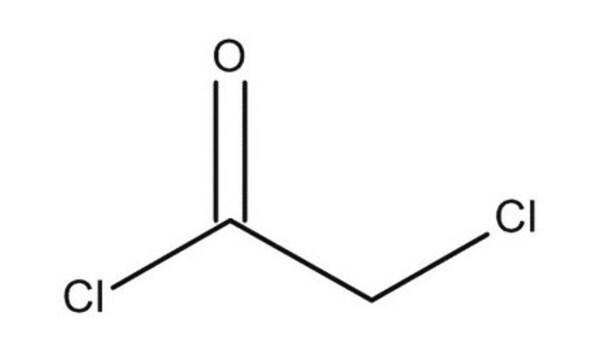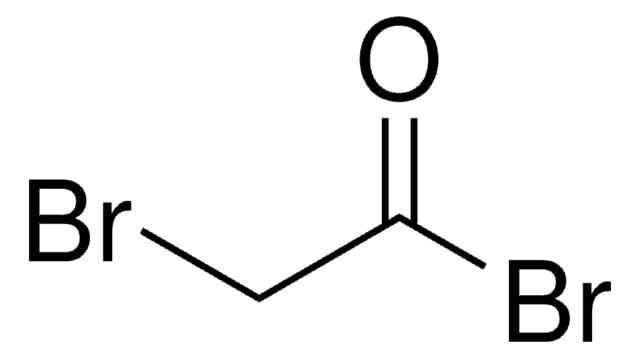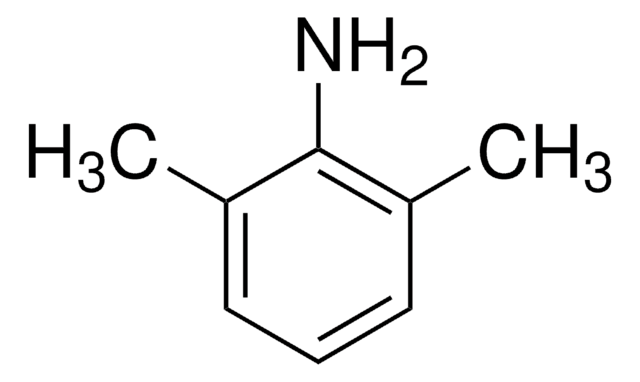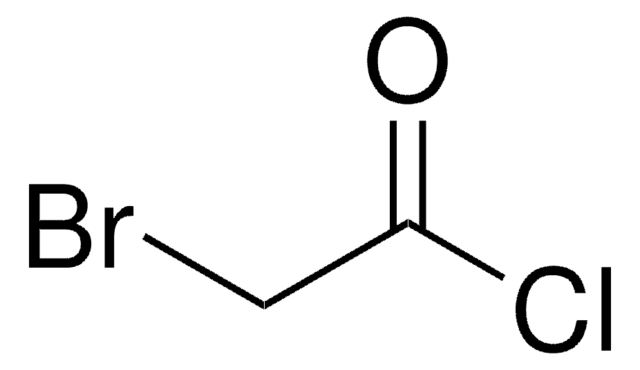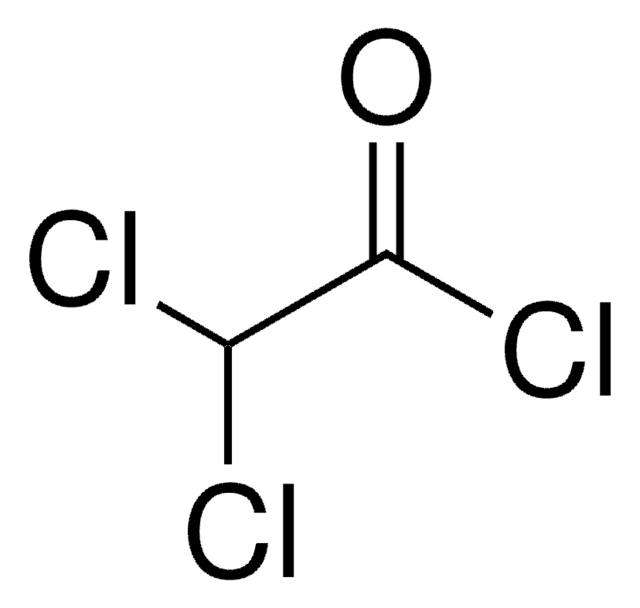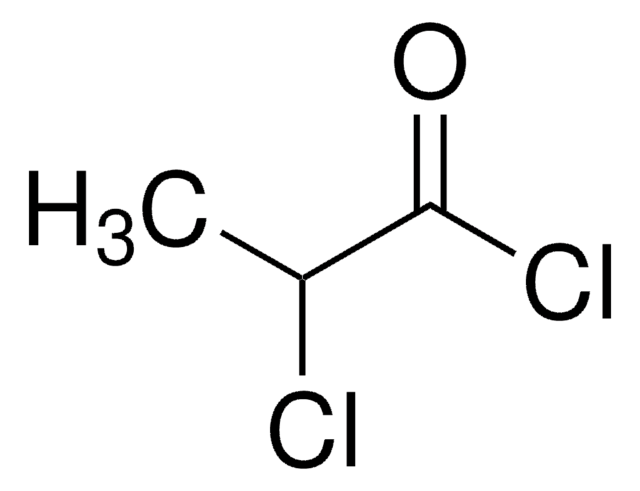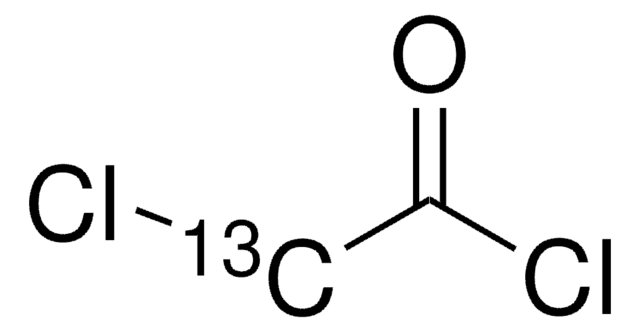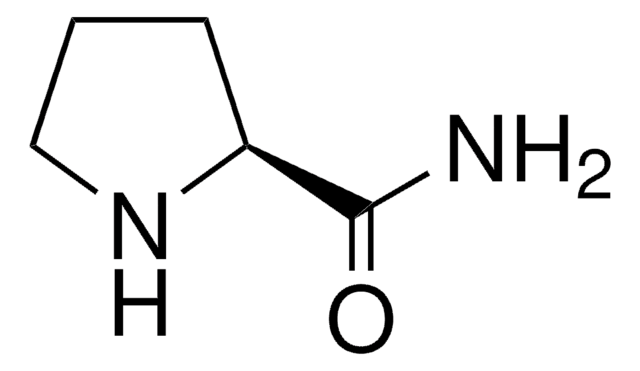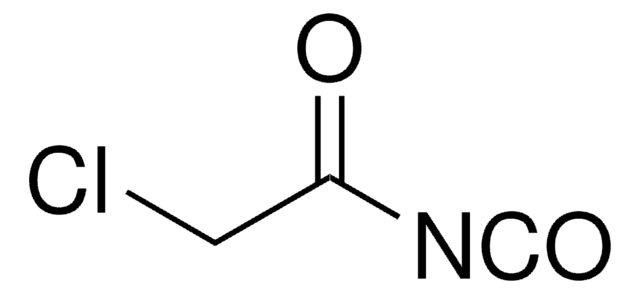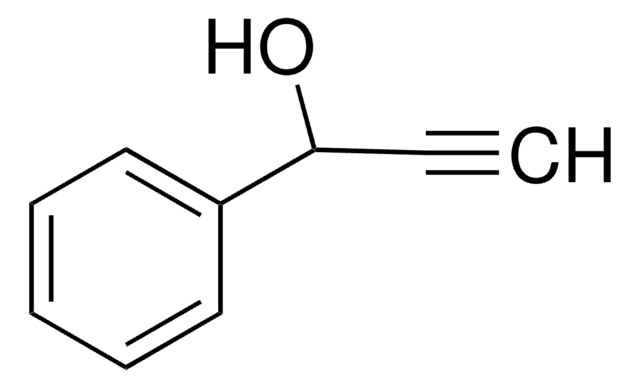Wichtige Dokumente
104493
Chloracetylchlorid
98%
Synonym(e):
Chloroacetic chloride
About This Item
Empfohlene Produkte
Dampfdichte
3.9 (vs air)
Qualitätsniveau
Dampfdruck
60 mmHg ( 41.5 °C)
Assay
98%
Brechungsindex
n20/D 1.453 (lit.)
bp
105-106 °C (lit.)
mp (Schmelzpunkt)
−22 °C (lit.)
Dichte
1.418 g/mL at 25 °C (lit.)
Funktionelle Gruppe
acyl chloride
chloro
SMILES String
ClCC(Cl)=O
InChI
1S/C2H2Cl2O/c3-1-2(4)5/h1H2
InChIKey
VGCXGMAHQTYDJK-UHFFFAOYSA-N
Suchen Sie nach ähnlichen Produkten? Aufrufen Leitfaden zum Produktvergleich
Verwandte Kategorien
Allgemeine Beschreibung
Chloracetylchlorid verursacht die Acylierung von Cyano-Pyrazolin während der Synthese von sekundären aminsubstituierten Cyano-Pyrazolin-Derivaten.
Anwendung
Signalwort
Danger
Gefahreneinstufungen
Acute Tox. 3 Dermal - Acute Tox. 3 Inhalation - Acute Tox. 3 Oral - Aquatic Acute 1 - Eye Dam. 1 - Skin Corr. 1A - STOT RE 1
Zielorgane
Lungs
Zusätzliche Gefahrenhinweise
Lagerklassenschlüssel
6.1A - Combustible acute toxic Cat. 1 and 2 / very toxic hazardous materials
WGK
WGK 3
Flammpunkt (°F)
212.0 °F - closed cup
Flammpunkt (°C)
100 °C - closed cup
Persönliche Schutzausrüstung
Faceshields, Gloves, Goggles, type ABEK (EN14387) respirator filter
Hier finden Sie alle aktuellen Versionen:
Besitzen Sie dieses Produkt bereits?
In der Dokumentenbibliothek finden Sie die Dokumentation zu den Produkten, die Sie kürzlich erworben haben.
Kunden haben sich ebenfalls angesehen
Unser Team von Wissenschaftlern verfügt über Erfahrung in allen Forschungsbereichen einschließlich Life Science, Materialwissenschaften, chemischer Synthese, Chromatographie, Analytik und vielen mehr..
Setzen Sie sich mit dem technischen Dienst in Verbindung.
